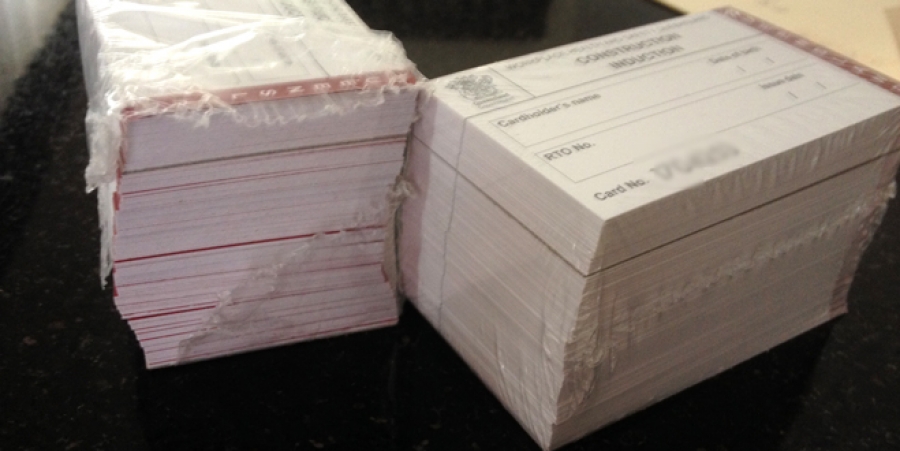- Identify and explain applicable OHS requirements;
- Identify and explain own responsibility to comply with safety requirements;
- Identify and discuss common construction hazards
- Identify and explain the role of designated OHS personnel
- Identify and explain procedure for responding to incidents and emergencies
- Verbally report construction hazards and risks;
- Ask effective questions.
These are requirements of the current “CPCCOHS1001A - Work safely in the construction industry” Unit. These are not new requirements as the current version of this Unit has been around since May 2009 and a lot of White Cards have been issued since then, as noted in the ASQA review of this Unit, more than 90% of White Cards completed have been done online.
Added to this are the perennial issues with online training (validity and authenticity) which were also highlighted by the ASQA report and it’s easy to understand the concerns about this, and other courses, being done online.
We note that some RTO’s have put in place a requirement that students need to contact them and explain a scenario situation. While, on the surface, this addresses some of the concerns raised, you don’t have to look too deep to see the pitfalls with this methodology. Each student has the same scenario so very quickly everyone knows what to say but the ever-present issue of authenticity must again be addressed. How on earth does the RTO know who is on the other end of the phone?
So can this (and other) Units and courses be delivered online or do we put this issue in the too hard basket and scrap the whole concept of online training? While some would propose that this is the only solution, this outcome would hold Australia back in the digital dark ages. We must implement strategies that address these important concerns.
Ammonite is built on innovation and solutions and we have addressed this issue and (we believe) solved it. We have addressed ‘authenticity’ by including in our system tasks whereby students must identify themselves with valid ID which is photographed with a web cam, and students must agree to be photographed answering each and every question.
We have developed RF2F (Recorded Face to Face) Tasks that allow students to ‘verbally report, discuss, explain, ask question’ etc. These tasks allow the requirements of the Unit to be met while still embracing and providing the demonstrated need for flexibility in training.
Another benefit that we had not initially considered was that by using RF2F tasks suddenly makes online training personal. Students are required to talk and interact and then they receive feedback from real trainers via the same format. They get to see and hear what the trainers have to say.
We note that the issue of using web cams was raised in the ASQA report, whereby it was identified that not all RTO’s had access to this technology and it was inferred that it would not be appropriate or fair to require that all RTO implement its use. Our view is that if this is what’s required for students, employers and industry to have confidence with online training, then it should be embraced as a minimum standard. In any industry, participants must stay current to remain competitive.
To get an idea of how our RF2F scenarios work, try part 5 in our White Card course over at Inscope Training
